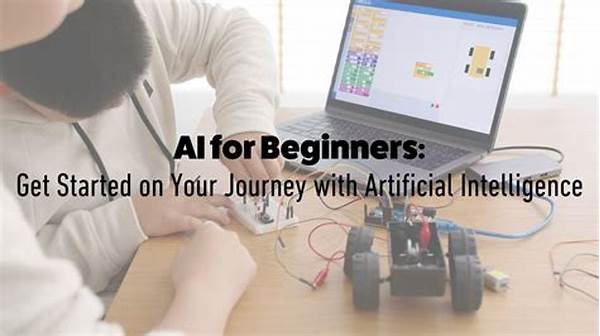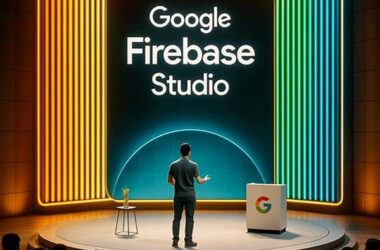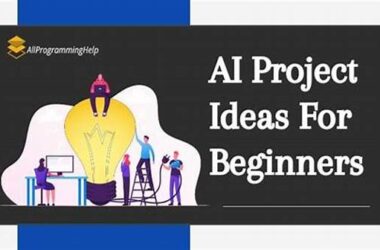Sure, here is a sample article outline for “How Beginners Apply AI to Creative Work”:
Read More : How Ai Helps Beginners Build Productivity
—H1: How Beginners Apply AI to Creative Work
In the digital age, the intersection of artificial intelligence (AI) and creative work is a fascinating realm full of potential and innovation. As AI technologies continue to evolve, they are becoming increasingly accessible to beginners, providing fresh tools and mediums for artistic expression. Imagine a canvas powered by algorithms, where creativity meets computation, and new forms of art are born. This technological crossover isn’t just for seasoned tech enthusiasts; even novices are finding ways to incorporate AI into their creative processes, enhancing their art in ways previously unimagined.
AI in creative work opens a new horizon for artists, writers, musicians, and designers. It’s like handing a paintbrush to a curious newcomer, except this time, the paintbrush can analyze millions of hues, compositions, and styles. Sure, AI might not replace the human soul seen in masterpieces but think of it as a collaborator—a more-than-capable assistant that helps transform basic ideas into vibrant realities. For those dipping their toes in these waters for the first time, understanding how beginners apply AI to creative work can be the crucial stepping stone to innovation.
One compelling aspect of this union is the democratization of creativity. Now, anyone with a concept and curiosity can explore artistic endeavors, thanks to user-friendly AI tools that don’t require a computer science degree to operate. As AI-powered platforms expand, they promise a future where creativity knows no bounds or barriers, shifting how we perceive talent and potential. This elevates the beginner’s role from a mere learner to a creator, whose contributions are valued, seen, and celebrated across digital landscapes.
From composing melodies that stir emotions to crafting visuals that capture imaginations, AI assists beginners by offering novel ways to engage with their creative pursuits. But how exactly do beginners tap into this vast reservoir of AI capabilities? How does one navigate this emerging creative ecosystem effectively? To truly understand the impact and application of AI in creative tasks, let us explore the dynamics and nuances involved in how beginners apply AI to creative work.
H2: Practical Applications: How Beginners Apply AI to Creative WorkThis section can talk about specific tools, platforms, and methods beginners can use to incorporate AI into their creative projects, including examples and potential outcomes.—Discussion: How AI is Revolutionizing Creative Work
The integration of AI in creative mediums is not just a trend—it’s a transformative wave reshaping how art is conceived and produced. While traditionally, creativity was seen as a purely human domain, AI’s infiltration into this space illustrates a major shift in paradigm. How beginners apply AI to creative work is now a focal point in understanding this evolution. But what does this really mean for those at the initial stages of this digital evolution?
H2: Understanding the AI-Creativity Synergy
On one hand, AI provides tools that enable precision, efficiency, and new possibilities in creative work. For beginners, this means having at their disposal instruments once reserved for professional artists and big-budget studios. AI helps in identifying patterns, generating ideas, and optimizing outcomes—tasks that might take humans significantly longer to perform. Think of AI as the introductory wingman, helping beginners navigate complex creative challenges with ease and efficiency.
H3: Overcoming Initial Hesitations
However, despite its potential to democratize art, integrating AI into creative work can seem daunting. Many beginners worry about the technical skills required or fear that AI might overshadow human creativity. Yet, the reality is that AI serves as an enhancer—not a replacer—of creative thought. It assists in materializing ideas that might otherwise be constrained by limitations of experience or resources. How beginners apply AI to creative work is less about replacing human creativity and more about augmenting it through new, exciting dimensions.
From using AI-driven tools in graphic design to composing music with artificial neural networks, the possibilities are endless. Beginners are empowered not just by the ability to create but by a supportive framework that encourages learning and growth. This narrative is crucial not only for the immediate impact it provides but also for the long-lasting influence it has on the creative industry as a whole. By revolutionizing access to creative tools, AI is reshaping the landscape of artistic opportunity.
Overall, embracing AI in creative processes invites a broader audience to partake in the imaginative tapestry and fosters an environment of continuous exploration and discovery. Whether you’re an aspiring artist, a hobbyist musician, or a novice writer, the pathway to your creative fulfillment is clearer and more exciting than ever.
—6 Actions for Beginners Applying AI to Creative Work
Description for AI in Creative Work Actions
In the realm of creativity, AI has emerged as an invaluable ally, offering beginners powerful tools to transform their visions into reality. Whether it’s designing stunning visuals or composing intricate melodies, AI empowers novices to delve into creative pursuits with unmatched grace. At the heart of this digital renaissance is a suite of applications that simplify, enhance, and diversify the creative process.
Engaging with AI-powered graphic design platforms grants users access to an array of templates, allowing even those with minimal experience to craft impressive designs. Similarly, AI-driven music composition applications provide users the ability to create harmonious and evocative tunes, expanding their creative repertoire. AI also lends a hand to writers, offering text-generating algorithms that serve as muses for new stories, essays, or poetry.
Video and photo editing software equipped with AI capabilities has transformed how beginners approach visual media. By automating complex adjustments and providing intuitive interfaces, these tools allow users to produce polished, professional-quality content with relative ease. Furthermore, AI storytellers are bridging the gap between reader and writer, enabling the creation of dynamic narratives.
The infusion of AI into creative disciplines encourages a broader participation in artistic endeavors, inspiring a new wave of “AI-enhanced” creators ready to contribute to an ever-evolving creative world.
—Discussion H2 and H3 Section with 600 WordsH2: Becoming a Creator: The AI-Enhanced Pathway
In today’s tech-savvy world, becoming a creator isn’t limited to those with innate talent or years of practice. The advent of AI has brought an explosion of tools that offer beginners unique opportunities to engage with their creative sides. AI’s role as a facilitator of creativity is transformative, enabling novices to craft, design, and innovate with newfound efficiency and ease. Let’s delve further into how beginners apply AI to creative work, setting the stage for a richer, more inclusive creative landscape.
H3: AI as a Collaborative Partner
To envision the full potential of AI in creative endeavors, it’s essential first to understand it as a collaborative partner. Rather than diminishing the artist’s role, AI complements human creativity, acting as a co-creator of sorts. This partnership allows for personalized artistic expression, where the beginner brings inspiration and the AI offers execution prowess. For example, how beginners apply AI to creative work could mean using software for spontaneous idea generation or employing algorithms to refine a piece of digital art.
Such collaboration reduces the learning curve significantly, opening doors to creative exploration for individuals who may have been deterred by technical or skill-related barriers—whether it’s a lack of formal training or time constraints. This accessibility leads to a democratization of creativity, where anyone can partake in the creative process, reinforcing the notion that inspiration is universal and unbounded.
AI’s ability to analyze vast amounts of data and generate content from this data means that even the most inexperienced users can step into creative roles, experiment with ideas, and produce works reflective of their unique perspectives. The AI-enhanced creativity pathway is marked by personalization and tailored learning, providing a scaffold for beginners to grow and evolve in their artistic endeavors.
However, challenges remain. Beginners must navigate the fine line between leveraging AI’s capabilities and becoming overly reliant on technology. Maintaining the human element in art is critical; thus, education on responsible AI use becomes instrumental in nurturing a balanced approach. As AI systems evolve, so should our understanding of how to integrate these technologies thoughtfully into our creative routines.
The ultimate promise of AI in creativity is a bustling bazaar of innovative ideas and novel expressions where technology and creativity thrive in tandem. For those stepping into this vibrant marketplace, understanding how beginners apply AI to creative work is a journey of discovery—of the self, of art, and of a future richly interwoven with technological artistry.
—7 Tips for Beginners Applying AI to Creative Work
Description for AI in Creative Work Tips
Embarking on a creative journey with AI might initially seem daunting, but with the right approach, it becomes a fulfilling and empowering experience. How beginners apply AI to creative work can greatly influence their artistic output, leading to a more enriched creative process. The key lies in starting small and gradually increasing engagement with AI tools, allowing for a comfortable acclimatization to these new tools.
Connecting with online communities and resources offers valuable insights and encouragement, forming a support network that nurtures growth and experimentation. Finding the right software that aligns with your creative style is vital to ensuring a seamless integration of AI into your work. Remember, the process should always reflect your personal vision and creativity. AI serves to augment, not override, the innate human touch in your creations.
Setting realistic goals is crucial as you navigate this blend of technology and artistry. The path to mastering AI tools is a journey, not a sprint, and staying updated with the latest developments keeps your skills and knowledge sharp. While AI opens up new possibilities, maintaining the authenticity of your creativity is equally important. Striking a balance ensures that AI is used ethically and artistically, upholding the integrity of your work while exploring new horizons.
By actively engaging with these tips, beginners set the stage for a rewarding relationship with AI in creative work, marking the first steps to becoming pioneers in this exciting field.



